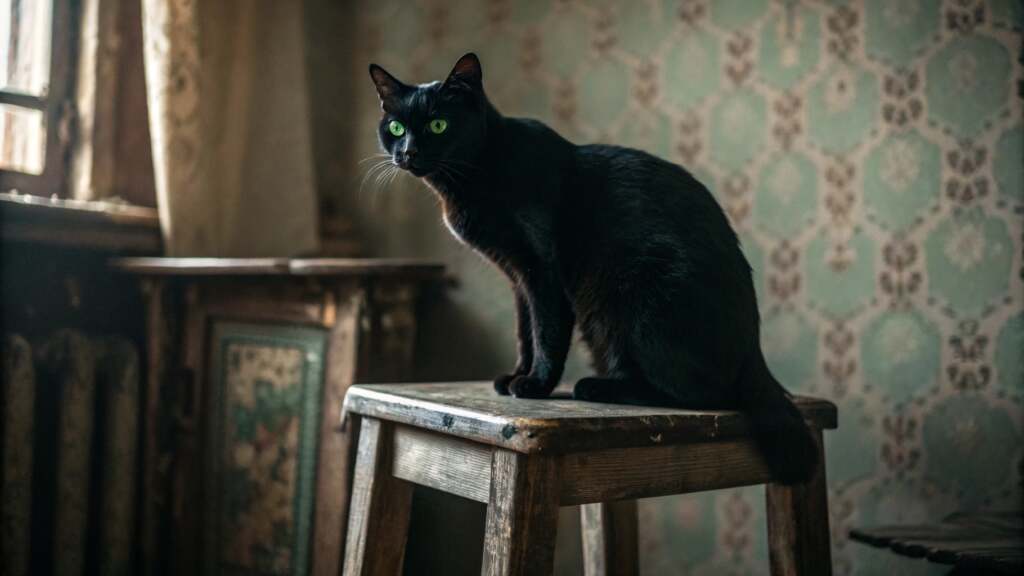Cats have a reputation for being mysterious — and nowhere is that more obvious than in the way they communicate.
While dogs often wear their emotions on their sleeves (or tails), cats are much more subtle.
Their bodies are like finely tuned instruments, offering clues to their feelings through the smallest flick of an ear or twitch of a tail.
If you’ve ever wished you could “speak cat,” the good news is you can — once you learn how to read their body language.
In this post, we’ll explore the secrets of feline communication, from the obvious to the almost invisible, so you can build a deeper bond with your cat.
Why Understanding Cat Body Language Matters
Learning to interpret your cat’s body language does more than satisfy your curiosity.
It can:
- Help you identify when your cat feels stressed, scared, or sick
- Strengthen your bond by responding appropriately to their emotional needs
- Prevent misunderstandings and unwanted behavior
- Create a safer, happier environment for both you and your cat
Cats are always communicating — even when they seem silent. You just need to know what to look for.
The Main Parts of a Cat’s Body Language
Let’s break down the key areas cats use to express themselves:
- Ears
- Eyes
- Tail
- Body Posture
- Whiskers
- Vocalizations (Yes, sound counts too!)
Each of these parts works together to create a complete message.
1. Ears: Tiny, Telltale Signals
Cat ears are incredibly expressive and can rotate 180 degrees.
Their position often tells you exactly what your cat is feeling:
| Ear Position | Meaning |
|---|---|
| Facing forward | Relaxed, curious, happy |
| Slightly sideways | Uncertain, alert |
| Flattened back | Fearful, defensive, angry |
| Twitching rapidly | Agitated, annoyed |
Quick Tip:
If you see flattened ears combined with hissing or growling, it’s best to give your cat some space.
2. Eyes: Windows to Their Mood
A cat’s eyes offer powerful clues:
| Eye Expression | Meaning |
|---|---|
| Slow blinking | Trust, affection |
| Wide open, pupils dilated | Excitement, fear, or high alert |
| Half-closed eyes | Contentment, relaxation |
| Staring without blinking | Dominance or challenge |
Fun Fact:
Slow blinking at your cat is sometimes called a “cat kiss.”
If they slow blink back, it’s a beautiful sign of trust.
3. Tail: The Ultimate Mood Indicator
The tail is like a cat’s mood barometer:
| Tail Position | Meaning |
|---|---|
| Held high and upright | Confidence, happiness |
| Tail curled around you | Affection, friendship |
| Puffed-up tail | Fear, aggression, arousal |
| Low or tucked tail | Anxiety, submission |
| Flicking or lashing tail | Irritation, anger |
Helpful Tip:
A high tail with a slight curve at the end (like a question mark) usually means your cat is feeling playful!
4. Body Posture: The Overall Picture
Body posture ties everything together:
| Posture | Meaning |
|---|---|
| Relaxed, lying on side/back | Feeling safe and secure |
| Crouched low, ears back, pupils dilated | Fear, ready to flee or defend |
| Arched back, fur standing up | Fear or defensive aggression |
| Stiff body, tail flicking | Annoyed or overstimulated |
Important Note:
Sometimes a crouching cat isn’t scared — they might just be focused on “hunting” their toy!
5. Whiskers: Small but Mighty Clues
Whiskers don’t just detect their surroundings — they also reveal emotions:
| Whisker Position | Meaning |
|---|---|
| Relaxed outward | Calm and comfortable |
| Pushed forward | Alert, curious, or excited |
| Pulled back against the cheeks | Fearful or defensive |
Fun Fact:
Never trim a cat’s whiskers. They are vital sensory tools, helping them navigate even in the dark.
6. Bonus: Sounds Matter Too!
While this post focuses mainly on body language, remember that vocalizations add important context:
- Purring often signals contentment (but can also happen when a cat is stressed and self-soothing)
- Meowing is usually communication directed at humans
- Growling, hissing, or yowling signals fear, anger, or discomfort
Pro Tip:
Watch their body as they vocalize. A purr with relaxed eyes and a high tail? Happy cat!
A purr with dilated pupils, tense body? Maybe a stressed one.
Common Cat Body Language “Sentences” You’ll See
Cats often send multiple signals at once.
Here are a few common “full-body messages” your cat might display:
- Happy, Confident Cat:
Tail upright, ears forward, eyes blinking slowly, relaxed body. - Play Mode:
Tail in a question mark shape, crouched position ready to pounce, wide eyes, forward whiskers. - Fearful Cat:
Crouched low, wide pupils, tail tucked, ears back, tense muscles. - Angry Cat:
Stiff body, tail flicking, narrowed pupils, ears back, hissing or growling.
The more you observe, the easier it becomes to read the complex “sentences” your cat speaks with their body.
How to Respond to Your Cat’s Signals
Understanding your cat’s body language is step one.
The next step is adjusting your behavior accordingly:
- If your cat is tense or fearful, give them space and avoid handling them.
- If they’re relaxed and affectionate, enjoy gentle petting and interaction.
- If they’re playful, break out the toys and join the fun!
- If they’re angry or overstimulated, back off and allow them to calm down.
Responding appropriately builds trust — and makes life better for both you and your cat.
Final Thoughts
Your cat might not speak with words, but they are communicating with you every single day.
Through their ears, eyes, tail, body posture, and even their whiskers, they are telling you exactly how they feel.
By learning to understand this secret language, you don’t just become a better pet parent —
you become a trusted friend, protector, and partner in your cat’s mysterious and wonderful world.
So, the next time your cat gives you a slow blink or curls their tail around your leg, know that you’re speaking a language that’s millions of years old — and perfectly understood between the two of you.
What’s the funniest or most surprising body language moment you’ve seen from your cat? Share your story in the comments — I’d love to hear about it!

